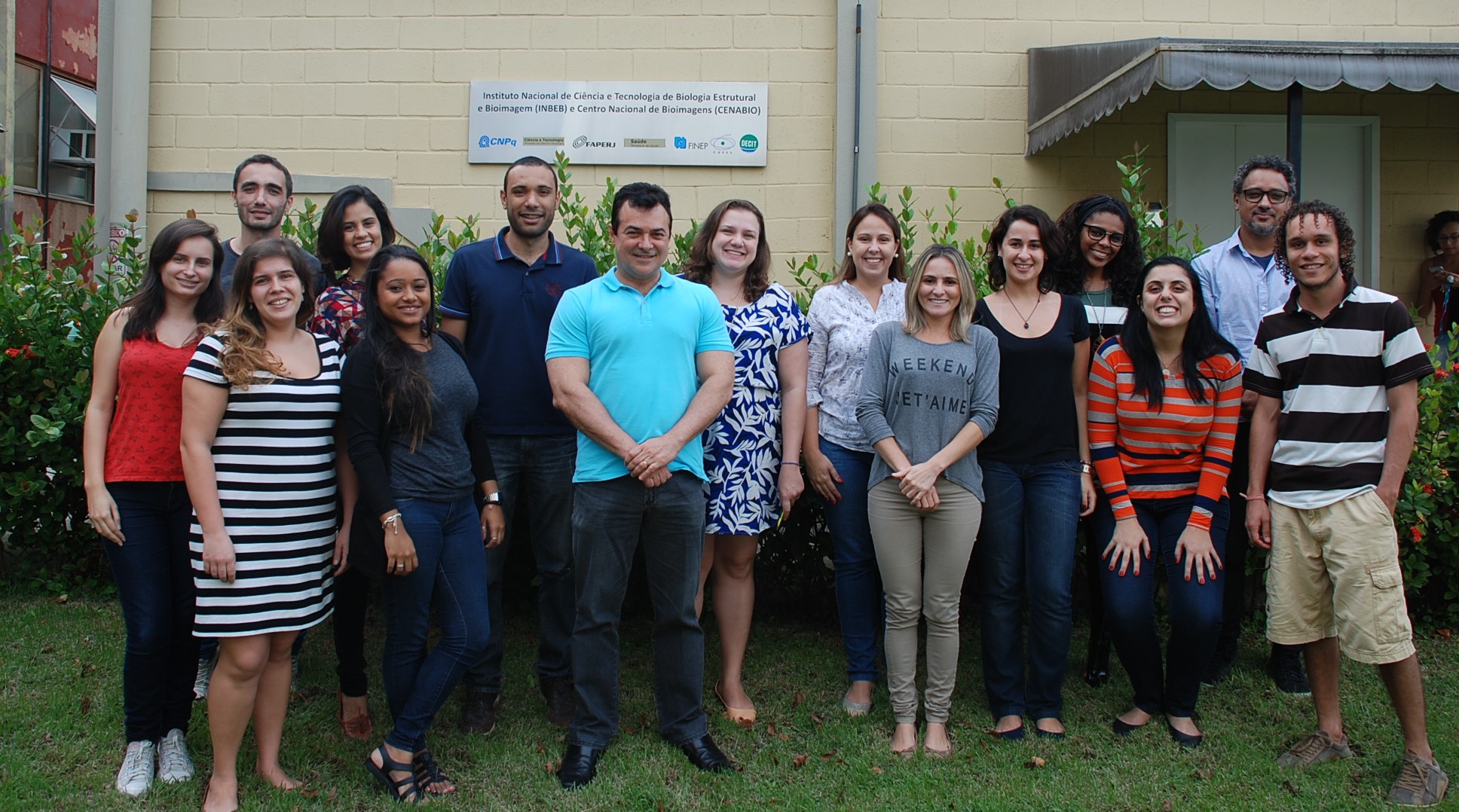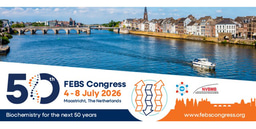Jerson L. Silva: "My career-long interest revolves around the understanding of protein folding and how proteins undergo misfolding and amyloid aggregation..."


Jerson Lima Silva, MD, PhD (pictured centre above, in light-blue top, with his research group) is Full Professor of Biochemistry in the Institute of Medical Biochemistry at the Federal University of Rio de Janeiro, Brazil. His main research interest is factors responsible for protein folding, protein–nucleic acid interactions and for the formation of biological assemblages such as viruses and amyloid aggregates, and his most pioneering discovery was that mutant forms of the tumor suppressor protein p53 undergo amyloid aggregation. He has received many prizes and awards, including the TWAS Prize in Biology 2005 from the Academy of Sciences for the Developing World (TWAS); FCW Prize in General Science from Fundação Conrado Wessel, 2010; "Faz Diferença" Prize in Science and Health 2012 (Jornal O GLOBO); and the Gregorio Weber Award (American Biophysical Society, 2018). He is a member of the Brazilian Academy of Sciences, Fellow of TWAS and Fellow of the National Academy of Medicine (Brazil). Jerson Silva is the Founding Director of the National Center of Nuclear Magnetic Resonance (UFRJ), Rio de Janeiro, Coordinator of the National Institute of Science and Technology for Structural Biology and Biomaging (INBEB), Rio de Janeiro, and President of the Rio de Janeiro State Funding Agency (FAPERJ).
What do you consider the most formative phase of your research career?
I consider the most formative time to be when I first went to the laboratory of Prof. Gregorio Weber at the University of Illinois, USA (1985–1986) as a postdoctoral associate, just after I graduated as a Medical Doctor at the Federal University of Rio de Janeiro (UFRJ). It was here I started the use of pressure to study protein folding and supramolecular structures, and this opened new vistas including in biotechnological applications. My training in biochemistry, biophysics and medicine at the Institute of Medical Biochemistry Leopoldo de Meis (at that time a Department of Biochemistry) from UFRJ in the1980s, especially under the supervision of Prof. Sergio Verjovski-Almeida, was also crucial – I received a solid training in experimental biological chemistry.
What are currently your favourite techniques and models?
For techniques, I will pick out fluorescence spectroscopy, single-molecule fluorescence microscope techniques, NMR, hydrostatic pressure, and cryo-EM. The combination of hydrostatic pressure with NMR has great potential to unveil the dynamics of folded, misfolded and unfolded states of proteins with atomic resolution.
For protein models, I highlight p53, alpha-synuclein, prion protein and the spike protein from SARS-CoV-2. These proteins play critical roles in different diseases of our days. p53 is mutated in more than 50% of malignant tumours and the prion-like states of the aggregates seem to be paramount in cancer pathology.
Tell us a little about some of the key findings/papers from your lab over the past 20 years
My career-long interest revolves around the understanding of protein folding and how proteins undergo misfolding and amyloid aggregation, related to neurodegenerative diseases and cancer. In the area of mutant p53, we discovered that p53 amyloid aggregation had characteristics similar to a prion and could play a crucial role in the development of cancer through loss of function, negative dominance and gain of function1,2. The prion-like behavior of p53 aggregates offers potential targets for drugs against cancer. Studies on physiological phase separation of proteins and the aberrant phase transition leading to amyloid aggregates have greatly advanced over the past ten years3, and we recently reported the first work showing modulation of the phase separation and phase transition of p534. Among our most important discoveries is also the description that prions have other accomplices, such as nucleic acids, that chaperone their activity in converting the PrPC into the disease-causing isoform5.
1. Ishimaru, D. et al. (2003) Fibrillar aggregates of the tumor suppressor p53 core domain. Biochemistry 42, 9022–9027, doi: 10.1021/bi034218k
2. Ano Bom, A.P. D. et al. (2012) Mutant p53 aggregates into prion-like amyloid oligomers and fibrils: implications for cancer. J Biol. Chem. 287, 28152–28162. doi: 10.1074/jbc.M112.340638
3. Silva, J.L. et al. (2018) Targeting the prion-like aggregation of mutant p53 to combat cancer. Chem. Res. 51, 181–190. doi: 10.1021/acs.accounts.7b00473
4. Petronilho, E.C. et al. (2021) Phase separation of p53 precedes aggregation and is affected by oncogenic mutations and ligands. Chem. Sci. 12, 7334–7349. doi: 10.1039/d1sc01739j
5. Cordeiro, Y. et al. (2001) DNA converts cellular prion protein into the β-sheet conformation and inhibits prion peptide aggregation. J. Biol. Chem. 276, 49400–49409. doi: 10.1074/jbc.M106707200.
What do you see as the main challenges and ‘impacts’ of research in your field?
One of the main challenges of our field is to understand at the structural level inside the cell the function and malfunction of biomolecular condensates originated from liquid–liquid phase separation and transition. Work from our lab and others is trying to understand the mechanisms behind the misfolding of mutant p53 resulting in amyloid species leading to a a crucial role in cancer development through loss of function, negative dominance, and gain of function. Strikingly, as in the case of toxic amyloids in neurodegenerative diseases, the molecular mechanisms responsible for the gain of function of mutant p53 are not yet completely understood. However, we already know that different cofactors, such as nucleic acids and glycosaminoglycans, are at the crossroads between these two classes of diseases.
Since more than 50% of malignant tumors harbor mutations in the TP53 gene, there is great potential to save lives if new therapies targeting this molecule are developed soon enough. Importantly, molecules that inhibit mutant p53 aggregation reduce tumor proliferation and migration. Thus, phase transitions to solid-like amorphous and amyloid-like states of mutant p53 emerge as formidable targets for the development of novel diagnostic and therapeutic strategies against cancer. In our recent review in Curr. Opin. Struct. Biol. (Silva, J.L. et al., 2022, doi.org/10.1016/j.sbi.2022.102346) , we point out a revolution in medicinal chemistry, chemical biology and cancer biology with future studies on the structural biology of phase transitions and prion-like aggregation.
Lab webpage: http://www.inbeb.org.br/index.asp
Jerson L. Silva will deliver the PABMB Lecture at the IUBMB–FEBS–PABMB Congress on Wednesday 13th July 2022 on ‘Phase separation, phase transition and aggregation of mutant p53 as an emerging target in cancer’: https://2022congress.febs-iubmb-pabmb.org/
Top image of post: Lung Cancer Metastasis, from the National Cancer Institute on Unsplash.





Join the FEBS Network today
Joining the FEBS Network’s molecular life sciences community enables you to access special content on the site, present your profile, 'follow' contributors, 'comment' on and 'like' content, post your own content, and set up a tailored email digest for updates.